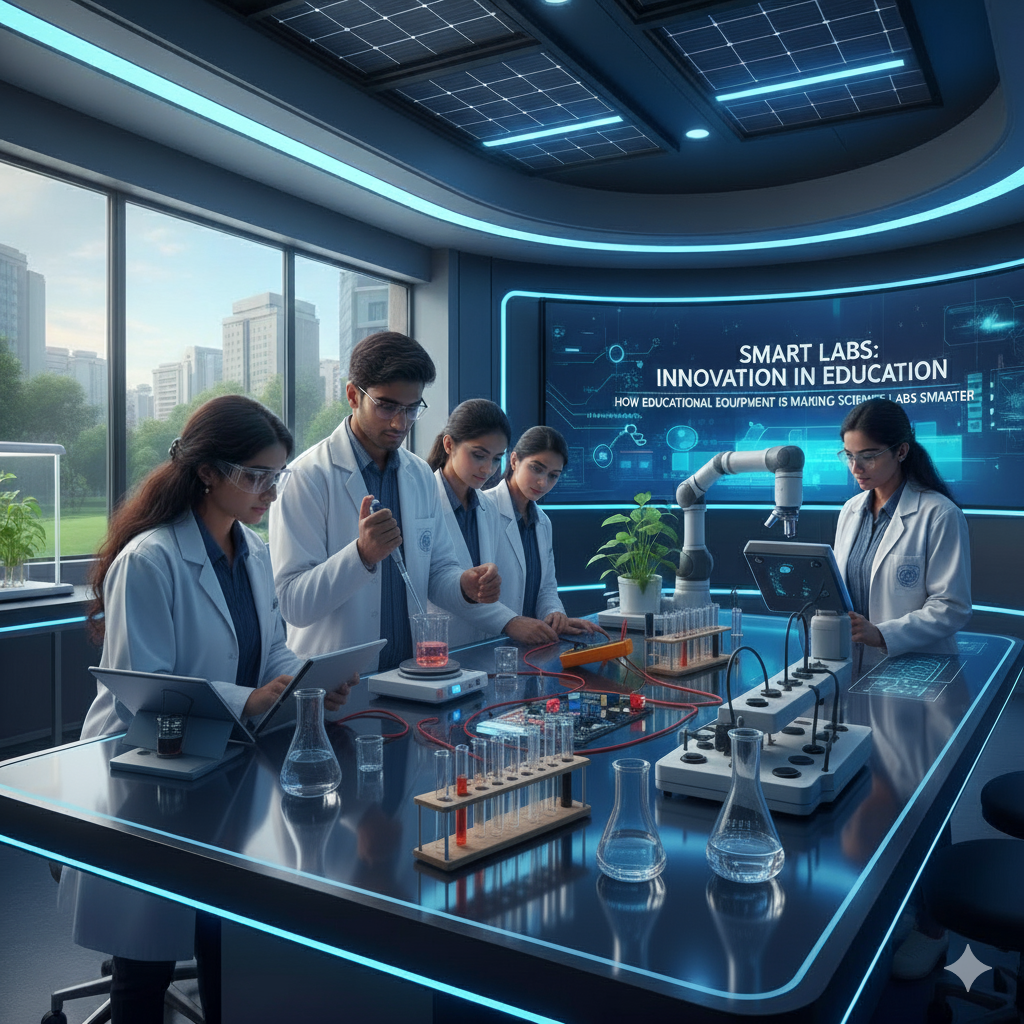LMS in a Digital Classroom: A Simple Guide for Educators

A few years ago, digital classrooms felt like a futuristic dream. Today, they are fast becoming the new normal across schools and colleges in India. But smart boards and interactive screens alone don’t make a classroom “digital.” What holds everything together—lesson plans, attendance, assignments, student feedback—is the Learning Management System (LMS).
If you’re leading a school or academic institution and considering digital upgrades, understanding what an LMS is and how it supports your classroom is essential. Let’s understand it in simple terms.
What Is an LMS in a Digital Classroom?
An learning management system is like the nerve centre of your classroom. It’s a software platform that helps teachers manage lessons, materials, assessments, attendance, and communication in one place. Think of it as a virtual command centre where everything related to learning is tracked, shared, and improved.
In a fully functional digital classroom, it works alongside devices like smart interactive displays that connect teachers and students more effectively.
When chosen well, an LMS can boost digital collaboration in the classroom, increase teaching efficiency, and free up valuable time for educators to focus on what matters: learning outcomes.
Types of Learning Management Systems for Your Digital Smart Classroom

Not all LMS platforms are the same. Broadly, they fall into three categories:
1. Cloud-Based LMS
Hosted online and accessible from anywhere. This is ideal for schools with mixed learning models or remote access needs. Platforms like Moodle or Google’s education suite are common examples of cloud-based LMS tools.
2. On-Premise LMS
Installed directly on the institution’s servers. Offers full control and data security but needs ongoing maintenance. Often preferred by private universities with internal IT teams.
3. Integrated Digital Smart Classroom LMS
These are bundled with digital classroom solutions, offering native compatibility with devices like Roombr. They’re plug-and-play, require less setup, and reduce the need for multiple vendors.
Each type has its pros and cons, but your choice should reflect your school’s size, budget, teaching needs, and how tech-ready your staff is.
Why Choosing the Right LMS for Your Digital Classroom is Important
An LMS isn’t just a piece of software. It impacts how your school functions every day, from attendance marking to parent communication.
Here’s why selecting the right one matters:
- Simplified Teaching Workflows: Teachers can upload lessons, share files, track assignments, and grade—all in one space.
- Better Student Engagement: With personalised dashboards, reminders, and multimedia content, students stay more involved.
- Improved Collaboration: LMS tools encourage digital collaboration in classrooms—students work in teams, teachers share across departments.
- Smart Data and Reports: Progress tracking helps you identify learning gaps early.
- Parental Involvement: Some LMS platforms allow parents to track their child’s performance, improving home-school communication.
In a competitive education environment, these features give your institution an edge. But not every LMS offers this seamlessly. That’s where thoughtful selection becomes crucial.
Essential Factors to Consider When Choosing an LMS for Your Digital Classroom
Let’s walk through the six essential factors you should evaluate before locking in a platform:
1. Evaluating User Skills and Adaptability
Teachers are already pressed for time. If the learning management system has a steep learning curve, adoption will suffer. Look for platforms that are intuitive, mobile-friendly, and require minimal training. In many Indian schools, especially in semi-urban areas, ease-of-use is often more important than flashy features.
2. Assessing Adaptability and Scalability
Can the system grow with you? Your LMS should support new classrooms, departments, or even campuses as you expand. Bonus points if it supports multilingual content—important in India’s diverse education system.
3. Tracking Learning Progress
A good LMS doesn’t just store content. It shows how it’s being used. Look for tools that allow real-time tracking of student performance, engagement levels, and attendance trends. Visual dashboards make this easier for both teachers and school heads.
4. Integration with Existing Systems
Does your LMS work smoothly with the digital classroom tools you already use? Platforms like Roombr offer integration-friendly setups that work well with most popular LMS solutions. This means less hassle for IT teams and fewer disruptions for teachers.
5. Gathering Insights from Current Users
Before deciding, talk to peers—other principals, academic coordinators, or IT heads—already using the LMS you’re considering. Ask them:
- What worked?
- What didn’t?
- How fast was onboarding?
- Did it improve teacher satisfaction?
First-hand feedback often reveals what sales demos don’t.
6. Post-Purchase Support and Service
In Indian schools, technology support is as important as the tech itself. Choose an LMS with a responsive customer service team that offers onboarding help, troubleshooting, and training modules. It’s a bonus if the vendor offers local language support.
Final Thoughts
A smart board can light up a lesson, but an LMS keeps the learning engine running. It works as the backbone of a digital classroom. As schools and colleges in India embrace digital transformation, selecting the right option is a strategic move.
At Roombr, we believe that hardware and software should work in harmony. That’s why our interactive classroom solution is designed to support seamless LMS integration—making it easier for you to manage, teach, and inspire. Ready to explore Roombr? Request a free consultation here.
Foziya Abuwala
Share
Step Into the future of
Education with Roombr

















